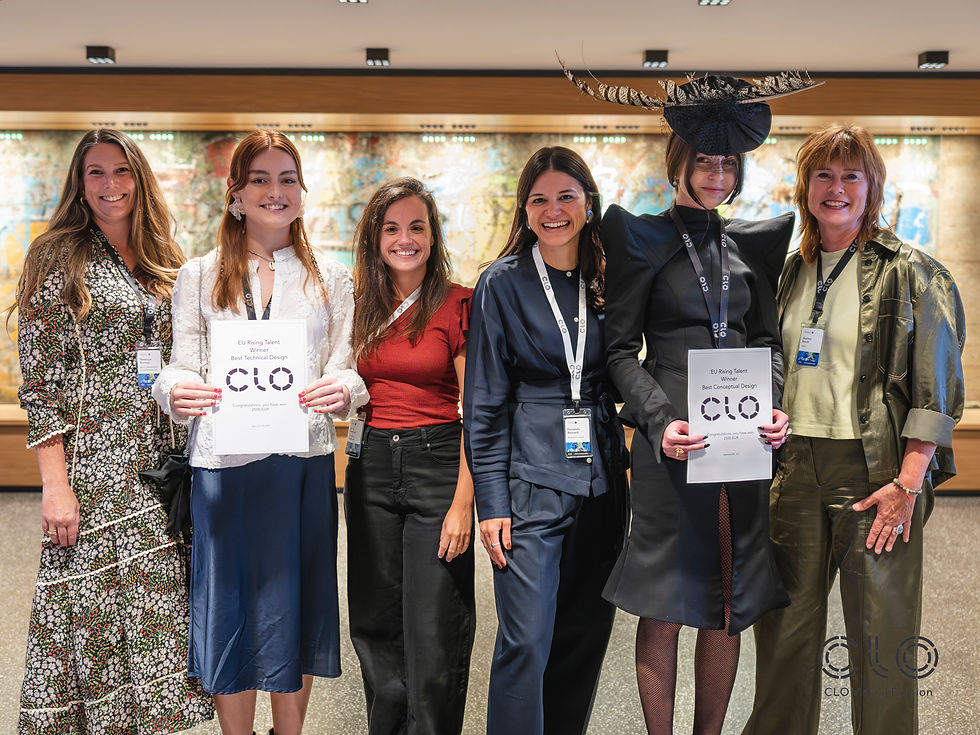Why 3D Still Matters: Reflections from the CLO3D User Summit in Munich
- Sep 10
- 3 min read
Plus what’s new (and coming soon) in CLO3D

Last week I had the pleasure of attending the CLO User Summit in Munich, a gathering of brands, vendors, educators and innovators who are pushing the boundaries of what's possible with 3D design technology in the fashion industry.
With all the current buzz around AI, it's easy to fall into the trap of thinking that 3D tools are becoming outdated or less relevant. But this summit made one thing crystal clear:
AI isn’t replacing 3D; it’s enabling it.
AI vs 3D? Let’s change the conversation
One of the biggest takeaways from the event was that 3D is not in competition with AI – in fact, it's what makes AI in fashion actually usable and valuable.
3D design tools like CLO3D give us access to rich, accurate data that can be used across the entire product lifecycle. From initial concepting and range-building to supply chain coordination, e-commerce and marketing, 3D allows us to design with precision, simulate fit, visualise fabrics and produce assets that can be used again and again.
Generative AI has a place in early ideation, but when it comes to accuracy, fit, fabrication and downstream use, 3D still delivers the goods.
What’s new (and coming soon) in CLO3D?
CLO shared several exciting updates and sneak peeks during the event. Here are a few of the things to look out for:
AI Studio – a powerful yet accessible tool for quick visual ideation and concept development
Soft Hair Simulation – more realistic avatar customisation for better visual communication
Ripping & Tearing Simulation – useful for sportswear, distressed garments or impact testing
Smart automation behind the scenes – improvements that streamline repetitive tasks without removing creative control
Faster library updates and more consistent fabric mapping
Improved asset integration – with tools like Swatchbook and potential future integrations with platforms like Miro
What stood out to me most was how CLO is integrating AI in ways that support the creative process, rather than replace it.

It’s about people, not just tools
A highlight for me was hearing Sean Barbour and Fritz Rometsch share the H&M 3D journey. It wasn’t just about success stories – they also talked about what didn’t work, and what they learned from it.
This kind of honesty is so important. It reminded me that digital transformation isn’t a flick of a switch. It’s a human journey, full of experimentation, learning and adaptation.
Strict rules and rigid best practice expectations often kill creativity and slow progress. Instead, we need to support people to explore what works for their teams, product types and workflows.

Education must be in the room
One thing I feel really strongly about: education must be involved in these conversations.
We’re not just training the next generation of designers. We’re leading research, building workflows, testing new tools and helping shape what the future of fashion could look like.
If education isn’t in the room, the gap between vision and reality gets wider.
It was brilliant to connect with so many inspiring educators and researchers, including Laura Jane Fish, Kyra Gibson, Gabrielle Shiner-Hill, Daniela Nascimento, Victoria Vasquez Pecile, Yasmin Koppe, Carles López and Penelope Norman. The work they’re doing is essential.

We need more decision-makers in the room too
Another key takeaway was the importance of bringing non-CLO users into these spaces.
I’m talking about heads of product, merchandising, sourcing and strategy – the people who may not be in the software every day, but who hold the power to invest in and scale digital adoption.
These are the people who need to see what’s possible. They need to hear the real-life case studies and challenges so they understand the value of what their teams are trying to do.
Final thoughts
This event reminded me how important it is to step out of our silos. Sometimes we need the echo chamber to validate our own thoughts. Other times, we need to be challenged by new ideas, new people and new ways of working.
Huge thanks to Fernanda Bernardi and the whole CLO Virtual Fashion team for creating a space that brought together industry, education and innovation.
And a special shout-out to Holly New and Liwia Labuz, the Rising Talent Award winners. your work is a clear sign that the future of digital fashion is in good hands.

Curious about how any of this affects what you do?
We work with brands, educators and individuals to help bridge the gap between digital tools like CLO3D and real-world adoption. Whether you're just getting started or need help scaling, we'd love to support you.
let's
Book a call below or email erica@cadforfashion.co.uk and lets have a chat!
Erica & the CAD for Fashion Team x







Comments